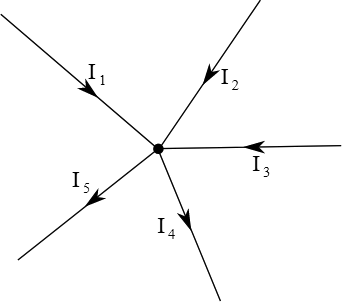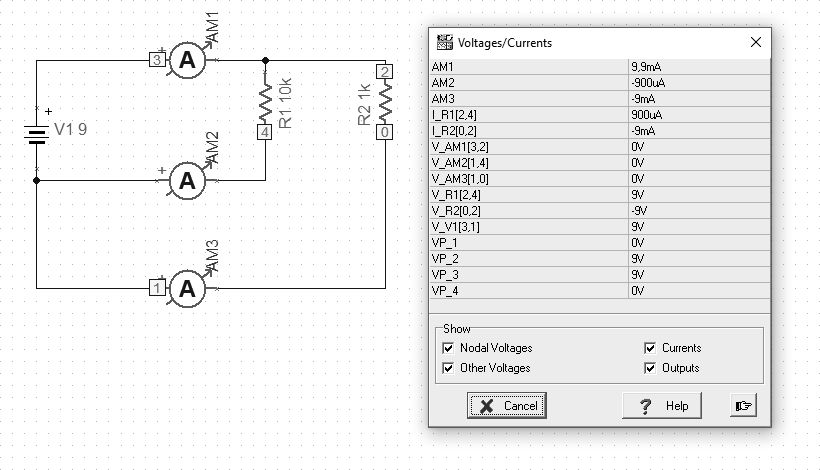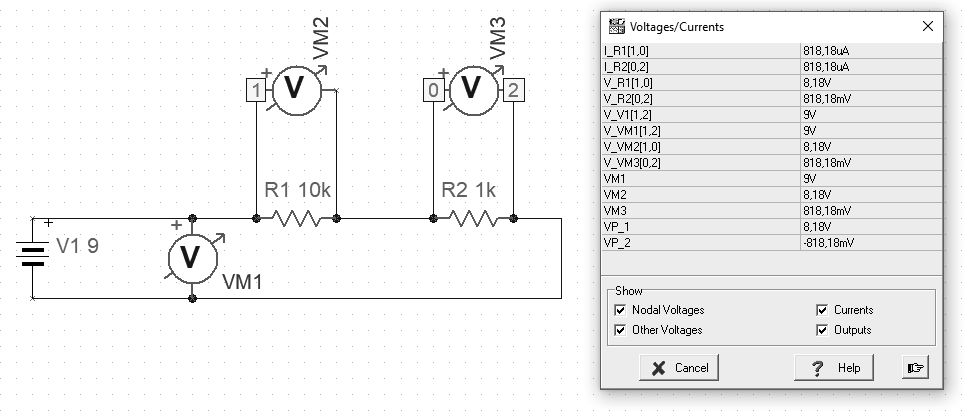Kirchhoff’s law
Theory and practice
[W] One of the basic principles of current flow is the first law of Kirchhoff, which says that for the electric circuit node, the algebraic sum of flow rates is zero. The sum of currents flowing into the node is equal to the sum of currents flowing out of this node. This law results from the principle of keeping the load.

Kirchhoff’s second law says that the sum of voltage drops in a closed circuit is zero, assuming that the voltage drop is its negative increase.
[202] For the purposes of illustrating the law of Kirchhoff, I prepared a simple example below. We start with an example about the first law. 2 resistors are connected, 10k and 1k respectively. We attach 3 ammeters in turn. Sum currents from the circuits of subsequent resistors give the current value for the entire circuit. We can measure this current at a point where there is 1 entrance and 2 outputs.

Another example is illustrated by Kirchhoff’s second law. An example shows the difference in the way the circuit elements are connected. By connecting the same voltage values in parallel. By connecting the sum of voltage drops on individual elements, connecting to individual elements.

“Gustav Robert Kirchhoff (born March 12, 1824 in Königsberg, died October 17, 1887 in Berlin) – a German physicist, creator of thermal radiation law regarding the relationship between emission and absorption capacity, and rights regarding electrical circuits (first and second law of Kirchhoff)” [W]
Examples available at https://github.com/michalasobczak/simple_hpc/tree/master/SeriesPartOne